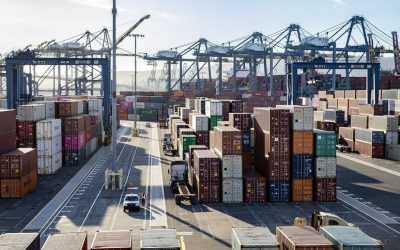Going against the trend of other shipping companies to cut departures, the French carrier has announced the launch of a seasonal service between July and September. This will result in a 25% increase in capacity between Asia and Europe, with an additional stopover in France every two weeks, on an alternating basis.
Each, in its own way, is demonstrating its confidence in the market, while confirming the turnaround in the container shipping business, which the first-quarter financial results of the shipping companies had already suggested, especially for CMA CGM.
After Maersk, which revised its financial outlook upwards, its French counterpart announced on June 11 that it was increasing its capacity between Asia and Europe by 25% in July and August in response to "the sudden rise in demand".
Introduced from June 30 to September, the so-called "exceptional" seasonal service, dubbed the French Peak Service, will involve seven additional departures operated by 7,000 TEU capacity ships, and an additional call every two weeks, alternating between Le Havre (GMP's Terminal de France at Port 2000) and Fos-sur-Mer (Eurofos).
They will be deployed between Yantian, Vung Tau (southern Vietnam) and Singapore and northern Europe (Le Havre, Antwerp), and from Shekou, Vung Tau and Singapore to the Mediterranean (Fos-sur-Mer, Malta).
Franco-French initiative
"The introduction of this new service demonstrates CMA CGM's ability to quickly adapt its offer to meet customer demand and support them in managing their supply chains in a context of disruption to major shipping routes," says the carrier, whose volume of cargo transported had increased, at the end of the first quarter, by 11.7% compared with 2023 and by 2.1% compared with the last quarter of 2023.
This Franco-French initiative contrasts with announcements in the sector, where the trend is to cut departures due to congestion in several ports in Asia and the Middle East.
The massive rerouting of the world's Red Sea fleet from the Suez Canal has led to a reshuffling of itineraries, with domino effects. In order to meet their transit times, some shipowners are canceling less profitable calls, thus increasing pressure on key ports, particularly in South-East Asia (Shanghai, Qingdao, Guangzhou, Singapore, Port Klang, Tanjung Pelepas...) and in the Western Mediterranean, especially in Tangier Med, Barcelona and Algeciras, where shipowners are transshipping.
39 departures cancelled between May 27 and June 30
According to analyst Drewry, the alliances cancelled 39 departures on East-West routes between week 22 (May 27-June 2) and week 26 (June 24-June 30), out of a total of 651 scheduled departures, representing 6% of trips taken off the map.
During this period, the biggest loser was the transpacific route (eastbound), with 44% of cancellations. The Asia-Northern Europe and Mediterranean routes were also hit hard, with 36% fewer departures. The transatlantic (westbound) route is a little more spared, with only 20% postponements.
Freight rates up 12% again
Drewry's global index rose by a further 12% last week to $4,716 per 40-foot container (FEU, forty equivalent unit), compared with $4,226 the week before.
À ce niveau, il est de 181 % plus élevé qu’à la même semaine de l’année dernière.
Avec 3 384 $ en moyenne depuis le début de l’année, le prix du transport a renchéri de 654 $ par rapport au taux moyen enregistré sur 10 ans (mais la pandémie biaise cette donnée).
Between Shanghai and Genoa, freight rates jumped in one week by 17% (+ $971) to $6,664 per 40-foot container. And between the world's port powerhouse and Rotterdam, rates rose by $762 to $6,032/FEU. Even in the opposite direction, rates failed to resist the downturn (+5% to $642/FEU).
The container sector thermometer, the SCFI (Shanghai Containerized Freight Index), composed of spot rates for containers departing from China to some 20 destinations, has risen 140 points in one week (to June 6), from 3044.77 to 3184.87, the 11th consecutive week of rate increases, driven by booming demand from China and a (temporary) shortage of vessels.
However, it is still a long way from the historic peak of 5,110 points recorded on January 7, 2022, at the height of the Covid crisis. Nevertheless, average spot rates are almost three times higher than a year ago. The SCFI rose from 1,000 points at the beginning of November to over 2,200 points in January and February, after which spot rates began to fall again.
The CCFI, which reflects spot and contract freight rates from China to a dozen global destinations, is close to 1,500 points (+184 points in one week). Last year at the same time, it stood at 931 points.
Rain of supplements
In its latest update, the world's number two liner operator Maersk expects disruptions to continue until the third quarter of 2024.
"We are doing everything in our power to increase the capacity of our routes. To date, we have leased over 125,000 additional containers and increased our sailing speed, while organizing our fleet to increase capacity where possible. Supplements are to be expected.
CMA CGM and Hapag-Lloyd have announced the Peak Season Surcharge (PSS) for mid-June: + $1,000/FEU on Asia-Mediterranean for the former, and on all Asia-Europe trades for Hapag-Lloyd.
Adeline Descamps



















0 Comments